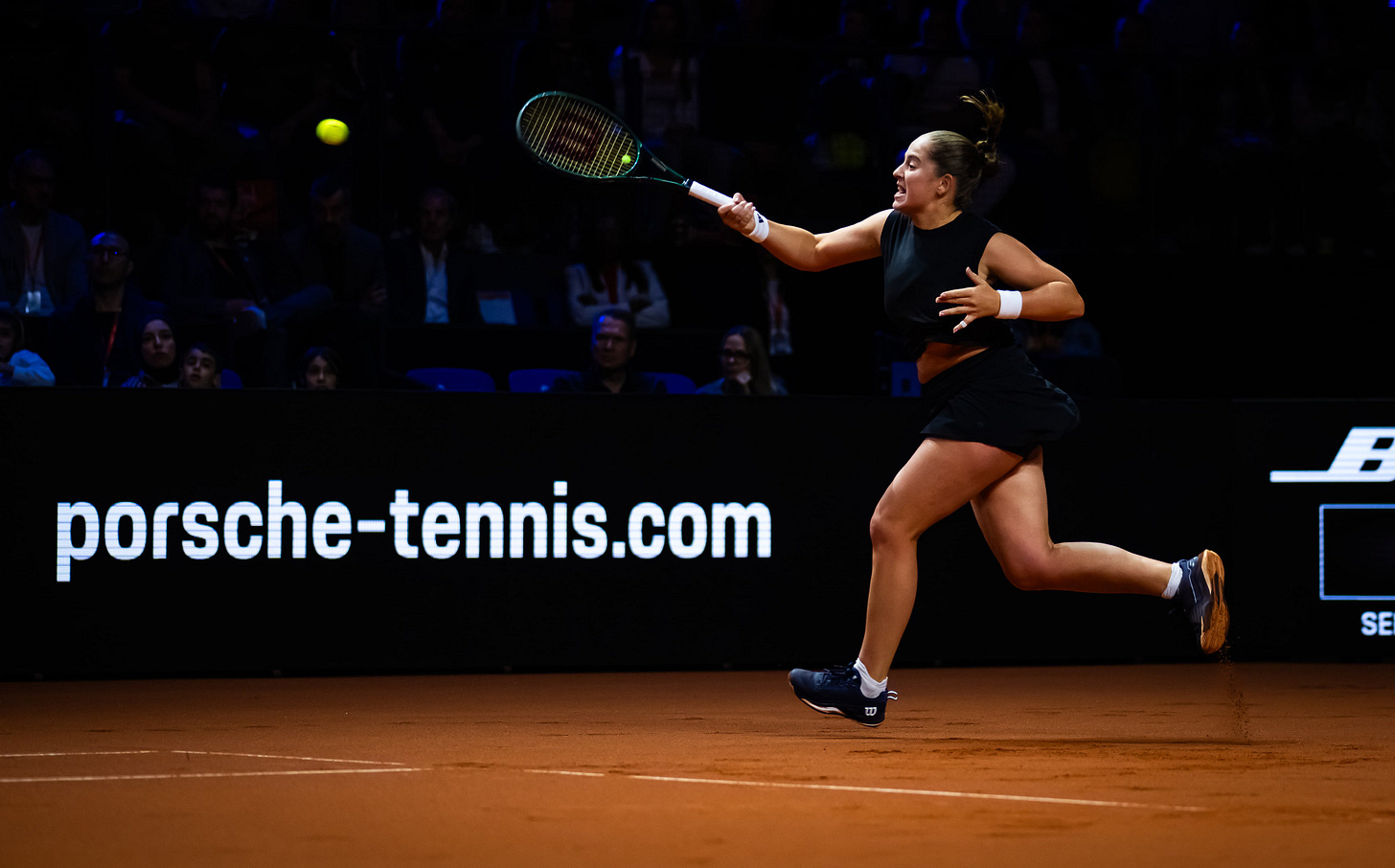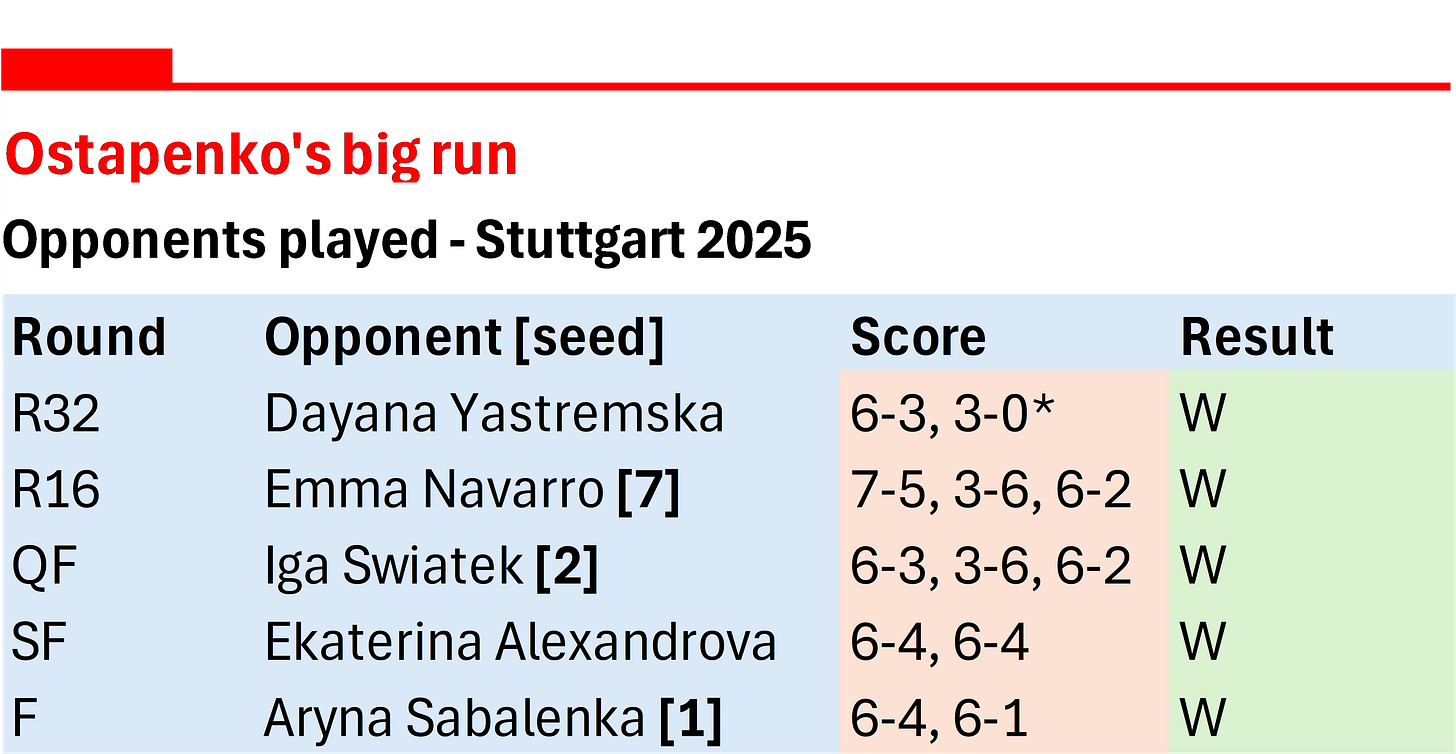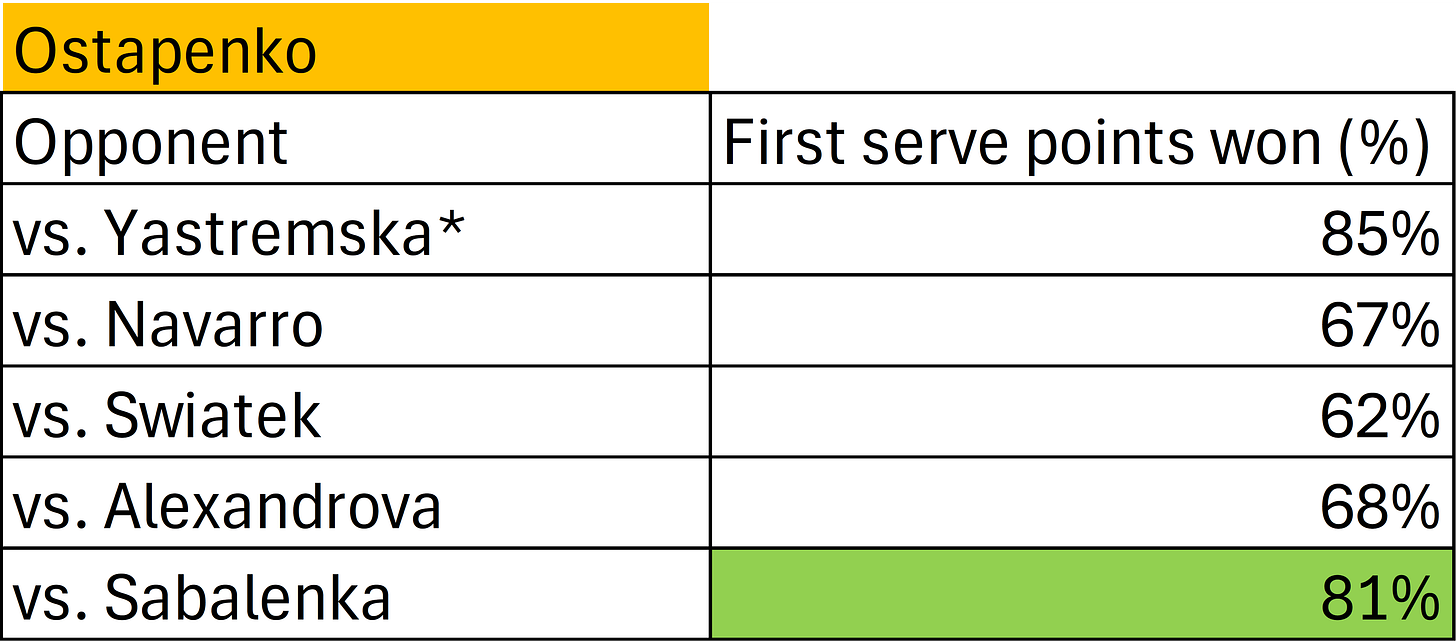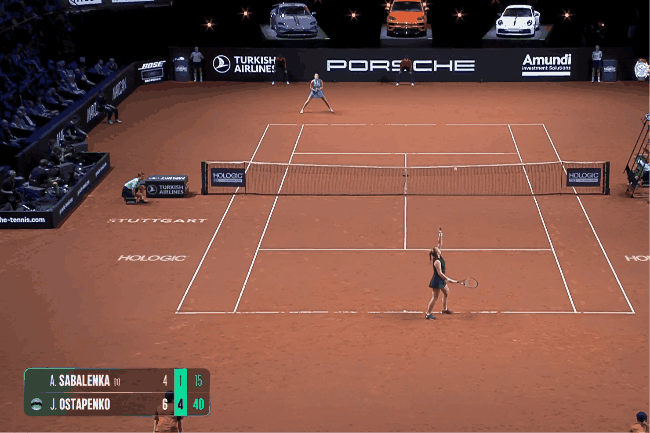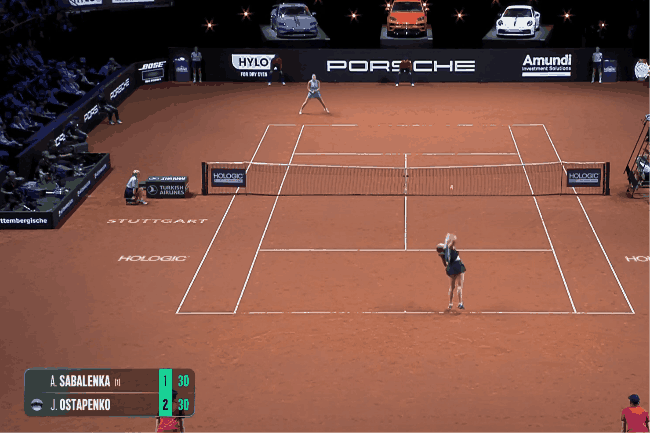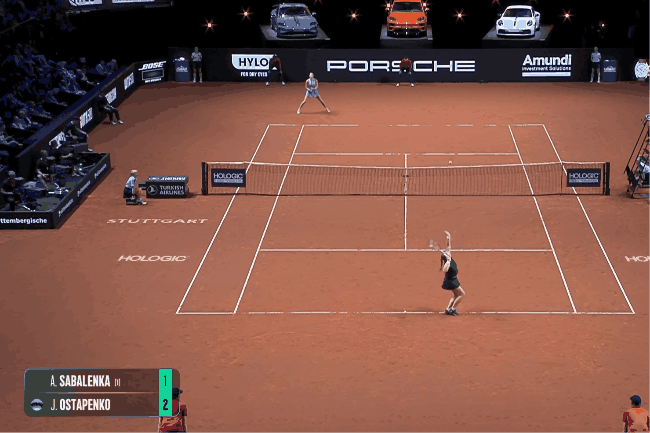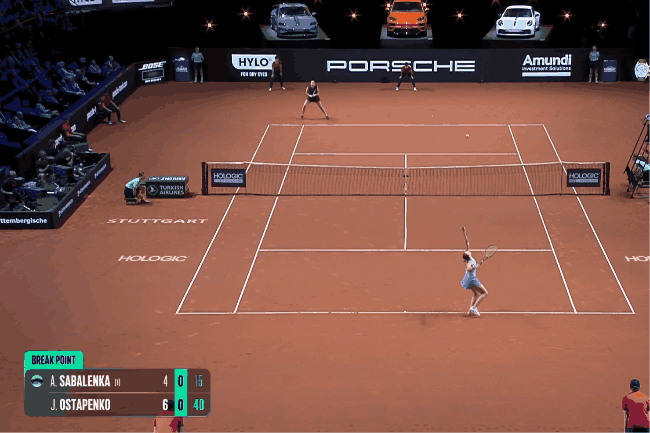Ostapenko vs Sabalenka: Stuttgart Final Analysis
First serves, the hitting duel, quality returning, Porsches
Ostapenko def. Sabalenka 6-4, 6-1.
Jelena Ostapenko defied the odds yet again on Monday, defeating Aryna Sabalenka in two high-powered sets to claim her maiden Stuttgart title. The victory marked Ostapenko’s 9th WTA title, and her first clay title since her famous run at Roland Garros in 2017.
In the process, Ostapenko also notched her first win against Sabalenka at her fifth attempt, with the H2H now standing at 4-1.
Ostapenko’s big week
Before getting into the match analysis, let’s take a quick look at Ostapenko’s run over the week. Her triumph in Stuttgart did not come easily – her draw was extremely difficult, facing a slew of top-ranked opponents.
En route to the title, Ostapenko took down #7 Emma Navarro in three sets in the Round of 16, #2 Iga Swiatek in three sets in the quarterfinals, and #1 Sabalenka in the final.
In the process, Ostapenko extended her head-to-head record against Swiatek to an incredible 6-0 and beat Sabalenka for the first time in her career. And one more thing: Ostapenko’s year-to-date singles record prior to Stuttgart was 7-9.
First serves – Ostapenko takes control
Not usually viewed as a big weapon in her game – Ostapenko’s first serve was one of the biggest factors in her victory. Ostapenko won an impressive 25 of 31 (81%) of first serve points – her best return in the tournament, barring her Round of 32 win against Yastremska:
One of the key reasons for this higher first serve winning percentage was because Ostapenko found particular joy serving to the Sabalenka backhand – she won 100% (!) of first serve points aimed in that direction:
Ostapenko served extremely well under pressure, and she was able to win free points at several crucial junctures of the match. A great example comes from 5-4 30-30 in the second set, with Ostapenko trying to serve out the first set:
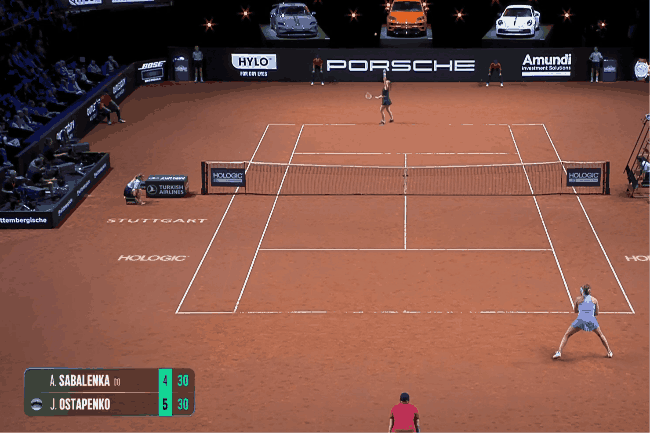
Ostapenko is once again in trouble here, down break point at 4-3 in the first set. She finds a great first serve down the T that Sabalenka can’t get back, even on the forehand wing:
And at time times, Ostapenko’s serve placement was simply unreturnable:
The hitting duel
Ostapenko and Sabalenka are two of the biggest sluggers on tour – both pack immense power on their forehand and backhand groundstrokes. But on Monday, it was Ostapenko who came out on top in their rallies, having a greater winning percentage across short (1-3), medium (4-6) and long (7+ shot) rallies:
How did Ostapenko achieve this, especially in medium and long length rallies? A couple of things stood out.
Part 1: Crosscourt forehands
The crosscourt forehand is one of Ostapenko’s favourite shots, particularly when she is afforded the time to load up through the shot and rip it into the opposite corner.
Ostapenko used the crosscourt forehand to excellent effect against Swiatek in the QFs, and it was no different against Sabalenka in the final. Ostapenko won 11 of 18 (61%) of points where she hit a crosscourt forehand – she was able to frequently target and put pressure on the Sabalenka forehand.
The tone was set early in the match. Here’s a look at a forehand duel between the two in the first game – a point which would earn Ostapenko the immediate break:
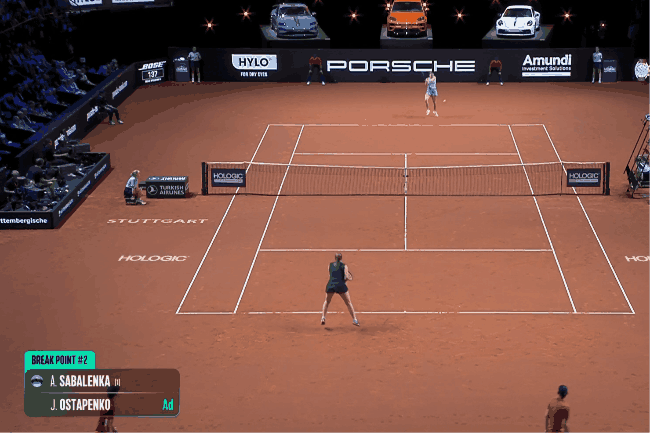
Another example here from late in the second set. Ostapenko was targeting the Sabalenka forehand wing, which was beginning to break down. While the crosscourt forehands do not win the point outright for Ostapenko, it induces the forehand slice from Sabalenka, and Ostapenko wins the point shortly after:

Part 2: Ball redirection
Outside of crosscourt forehands, Ostapenko is also brilliant at redirecting balls to the corners of the court, even if the ball is being hit at considerable pace or through the centre of the court – she still finds a way.
This redirection was on display early in the first set, in the 2-1 game. Ostapenko manages to redirect a deep, central ball from Sabalenka to the corner with an inside-out backhand, before finishing the point off with, you guessed it, a crosscourt forehand back in behind Sabalenka:
Again, look at how Ostapenko immediately pounces on the central ball from Sabalenka, hitting it with a shorter angle to the backhand corner:
Second serve returning
One of the standout aspects of this match was the second serve returning from both players. Ostapenko and Sabalenka both had troubles with their second serves – and these issues are compounded on slower surfaces like clay, where the ball tends to sit up for a fraction longer.
In total, Ostapenko and Sabalenka won a combined 17 of 52 (33%) of second serve points won:
Both players managed to hit in excess of 50% of their returns ‘very deep’ – and between Sabalenka and Ostapenko, only three second serve returns were classified as ‘shallow’ for the entirety of the match:
Some examples below. Ostapenko walks straight into the serve, ripping the backhand return deep and straight at Sabalenka’s feet, forcing the error, and the early break:
Sabalenka also pulled no punches, punishing the weak Ostapenko second serve – drilling the backhand return down the line for an outright winner:
Drop shots – a missed opportunity for Sabalenka?
When analysing some of Sabalenka’s past matches, I’ve lauded her variety, particularly her drop shots and short slices. These shots have become a genuine weapon for Sabalenka, and this is especially true on slower surfaces like clay.
There are two primary benefits of using drop shots and shorter slices against Ostapenko. Firstly, these shots can exploit Ostapenko’s movement by drawing her forward. Secondly, these shots can disrupt the pattern of play that Ostapenko prefers – an out-an-out hitting battle.
Sabalenka didn’t draw on her variety enough against Ostapenko on Monday, despite having success on the few occasions when she did employ the drop shot or shorter slice.1 Some examples below of when Sabalenka’s drop shots exploited Ostapenko’s movement and disrupted the rhythm of the rally:
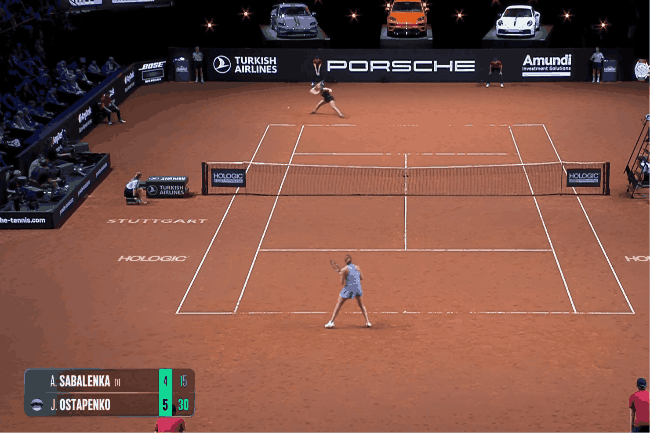

Overall thoughts
Ostapenko’s swashbuckling run in Stuttgart is broadly representative of her entire career – enigmatic, and wildly unpredictable. Ostapenko overwhelmed Sabalenka with her blitzkrieg style of tennis – she outhit, out-served and outplayed her opponent. The winners and unforced errors give us a general idea of Ostapenko’s ascendancy:
Ostapenko noted that she played with less pressure and more freedom over the week:
“I had already enough pressure in my career. Even today I didn’t feel it -- even though it was final. In my mind, I was just playing a match.”
And of course, she’s the proud owner of a new Porsche. And a picture of her driving it onto the court might just be the best possible way to sign off.
I’ll see you next week, and thanks as always for reading. -AP.
If you want to read more tennis analysis like this:
Of course, this is easier said than done. Ostapenko is the most aggressive player on tour in terms of winning (and losing) points off her own racquet – so chances to utilise drop shots are naturally a little more sparse.


